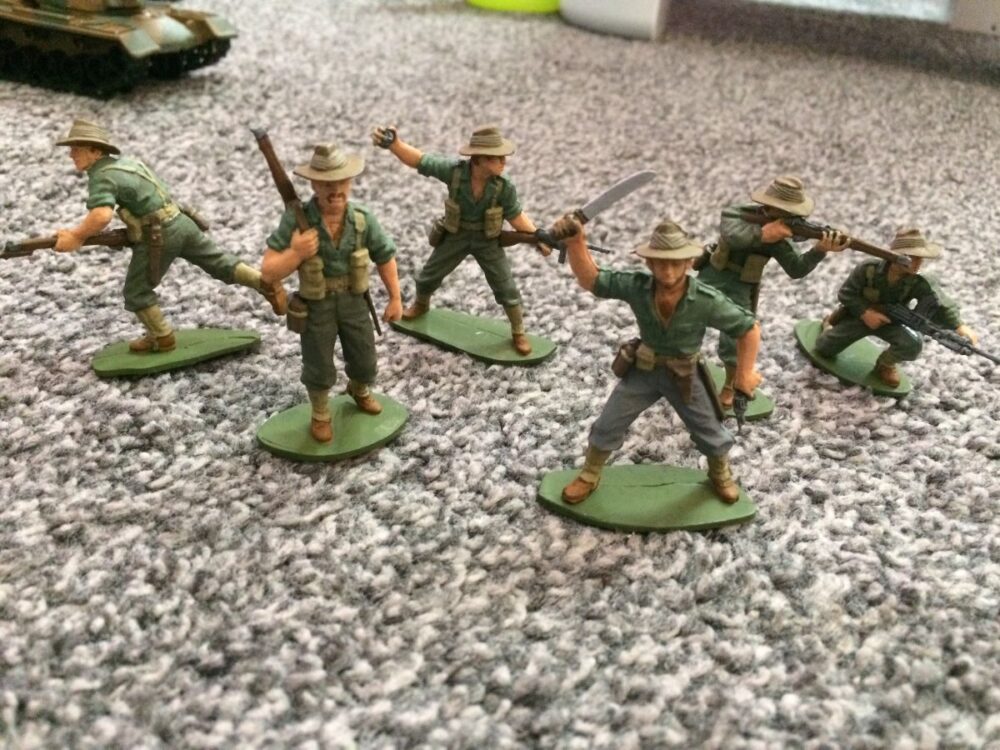Lifestyle
Miniature Soldiers: Replicating the Most Important Events in History
Are you a history buff? Have you ever wanted to build your own diorama or a vignette in honour of the events that changed the world? Then, you’re probably considering getting into the hobby of scale modelling.
Scale modelling involves building small-scale three-dimensional replicas of vehicles, structures and even whole events that are faithful representations of reality. As such, it’s a very common way for people to recreate some of their favourite battles in history.
Today, there’s a whole market dedicated to military models which includes every little detail from historically-accurate ships, tanks and aircraft to whole armies. Besides appealing to scale builders, these items are also popular with collectors. Since this is a very wide topic of discussion, let’s narrow it down to the most interesting part – the armies of miniature soldiers.
What Are Miniature Soldiers?
Of course, we’re all familiar with toy soldiers. But these are quite different from your average toy. They are historically, physically and geometrically correct figures that represent members of a particular army. From the WWII British infantry and US army marines to Roman soldiers, you can find miniature figures from every historical era.
Of course, just like every other product on the market, these items all vary in terms of their quality, scale and realistic features. There’s a huge variety of figures today, from the lifelike collections of miniature Airfix soldiers to the Tradition kits, which all cater to different budgets and wishes. That said, let’s help you learn more about these items so that you can make an informed decision before you get into the hobby of scale modelling important historical events.

Understanding the Scale of Model Figures
When it comes to the subject of scale, many newcomers and even a few seasoned collectors are perplexed. If you already have a collection and would like to add to it, it is crucial to understand the modelling scale and proportions of a tiny figure before purchasing.
Even the companies that make the figurines, like for instance Airfix soldiers, employ ambiguous scale references, making it difficult to determine miniature size and model scale. The contrasts between miniatures of the same modelling scale are also muddled by the miniature sizes.
While the most popular size for model military vehicles is 1/35, a prevalent scale for the soldiers was 1/32. This presented a dilemma for modellers creating dioramas that included both vehicles and figures. Due to their somewhat bigger scale, several figures on the market appeared to be too huge. Although numerous 1/32 scale models are still available, there are mostly 1/35 scale figures available today to satisfy the military vehicle modeller.
However, those who only engage in figure collecting may prefer the 1/72 and 1/76 scales. These are quite smaller and can easily fit on a display shelf. They are also more affordable since there’s less material used in making them.
Considering all of this, be sure to read the products’ info sheet and take your time to select the appropriate scale when purchasing figures.
What Materials Are Used for Making Army Figures?
Toy soldiers have historically been made from a wide variety of materials, but let’s focus on plastic and metal as the most common options today. Since lead has been prohibited from usage in toys since 1966, we mention “metal” instead of “lead.” Since then, the metal—often tin—used by soldiers is thought to be non-toxic. However, it’s not recommended to buy metal toy soldiers for children under the age of 14.
Metal figurines are typically more expensive and more delicate. They are best suitable for display. On the other hand, plastic figures—painted or unpainted—are significantly less expensive and typically more durable. They are most popular with war gamers.

Depending on the manufacturer and the customer’s preferences, the plastic quality varies. The hard plastic is more brittle than soft plastic. However, its upside is that it allows the collector to glue the figure together in a variety of postures. The majority of figures are made of soft plastic, which is by far collectors’ top choice. All figures that are referred to as plastic, unless otherwise stated, are made of soft plastic.
Painting Your Collection
Painting military miniatures is incredibly popular, even as a hobby on its own. Just like scale model building, it’s an extremely intricate and delicate art that calls for patience and accuracy.
Different miniature paintings require different paints, but you must use proper paint if you want to paint successfully. There are three different kinds of paint used for military figures.
- Acrylics – Water-based acrylic paint dries quickly and adheres well to most surfaces. This is due to the fact that they don’t need a varnish or primer coat before use.
- Enamels – Oil-based enamel paints have been in use for more than a century and offer a premium appearance with a shiny finish. Because they are durable, they are also frequently used by the armed forces who also employ scale models for education and tactical purposes.
- Oils – Because of their lengthy drying times, oils provide greater detail flexibility and a finish with an even sheen.
When it comes to colours, you will probably need to use a single palette for military miniatures. This is because you will probably be painting figurines with the same gear or uniform. Otherwise, the painting procedure is the same as it would be for any other miniature, such as one from a Warhammer 40k or Citadel game.












